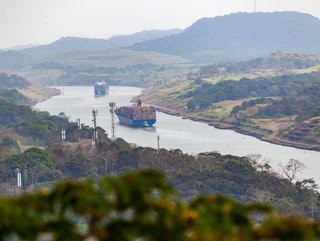Panama Canal Drought Reshaping Sea Cargo Map - McKinsey

With so much attention focused on how the Red Sea crisis is affecting access to the Suez Canal, another long-running logistics problem has rather slipped off the radar: the Panama Canal drought.
The long-standing drought has seen the introduction of strict weight limits and rising surcharges for vessels traversing the canal.
Management of the canal is overseen by the Panama Canal Authority (PCA). In its most recent guidance (January 16) the PCA announced that daily transits will be limited to 24 slots per day – 12 fewer than the pre-drought daily average. Vessels hoping to cross the Canal need to pay a booking fee, either in advance or through an PCA auction.
This follows ongoing PCA drought measures to reduce draft levels. (‘Draft’ is a measure of how low a vessel can sit in the water.) In order to meet lower drafts, ships have been lightening loads by carrying fewer containers, which has meant higher prices for consumer and industrial goods moving through the canal.
Many ocean carriers are now charging per-box container fees in response to draft limits, Bloomberg reports.
The problem is that drought has caused perilously low water levels at Gatun Lake, which feeds the locks in the Panama Canal with the fresh water needed to raise vessels as they pass from the Pacific Ocean to the Atlantic.
If Gatun Lake levels continue to fall as forecast, there will be a scramble to find alternative routes from Asia to the US.
Panama Canal daily restrictions down to 24 vessels
Now, with the PCA introducing daily shipping limits, the Panama Canal situation is clearly worsening.
And it means that, with the ongoing Red Sea crisis, the two most important waterways in world logistics are both seriously compromised.
Management consulting company McKinsey has taken a detailed look at how Panama Canal restrictions are likely to affect supply chains.
McKinsey fears that a cap on canal transits could see millions of tons of cargo rerouted, leaving different sectors facing difficult choices.
Its report on the Panama Canal restrictions says that by reducing the volume of canal transits by one-third, the PCA will reshape seaborne trade flows.
It points out that roughly 100 million tons of cargo – around 35% of the total amount of cargo that traversed the canal in 2022 – could be affected.
“Many ships could divert to alternate routes,” it says. “And this could mean longer sailing durations and increased costs.
McKinsey also says that the combined impact of slowdowns at the world’s two major canals “could be significant”, and reminds people that when a grounded container ship blocked the Suez Canal for just six days in 2021, it cost the global economy an estimated $9.6bn.
McKinsey predicts that, if trade patterns remain unchanged from pre-restriction norms, an estimated 2,000 annual Panama Canal transits could divert to the Cape of Good Hope, at the southern tip of Africa.
McKinsey: Panama canal problem causing inventory costs
It points out that longer journeys are more expensive due to time and fuel consumption factors, and that they also create more inventory-holding costs associated with onboard cargo.
“New routes could increase the total ocean transport costs of trade currently moving through the Panama Canal by an estimated annual $1.1bn,” says McKinsey.
“These new routes will likely slow ships’ journeys by about 20%, and many ships that once traversed the canal could opt to sail different routes likely take on average four more days.”
McKinsey also points out that PCA restrictions will not affect all supply chains equally.
“Some ships could be willing to pay for limited canal transit slots, because of potential benefits from the quicker journeys that the canal enables,” it says. “Other ships could find it now makes sense to avoid canal fees by diverting to other routes.
******
- Check out the latest edition of Supply Chain Digital and also sign up to our global conference series: Procurement & Supply Chain 2024.
Supply Chain Digital is a BizClik brand.
- Surge in Container Ship Orders 'Will Ease Red Sea Crisis'Supply Chain Risk Management
- 2024 Alix Partners Disruption Index Reveals CEO ConcernsOperations
- People Resolve Supply Chain Crises, Not Documents, Says PwCSupply Chain Risk Management
- Rising Container & Oil Prices Putting Squeeze on LogisticsLogistics






